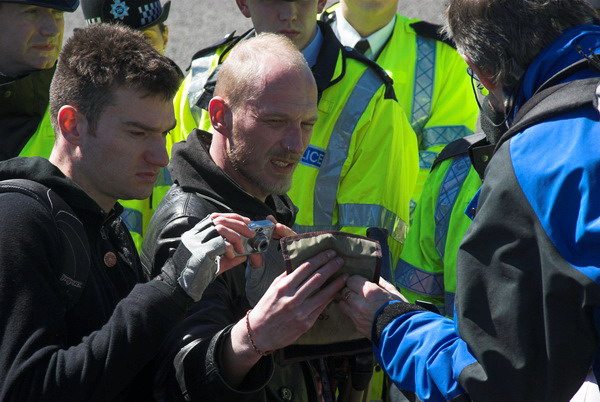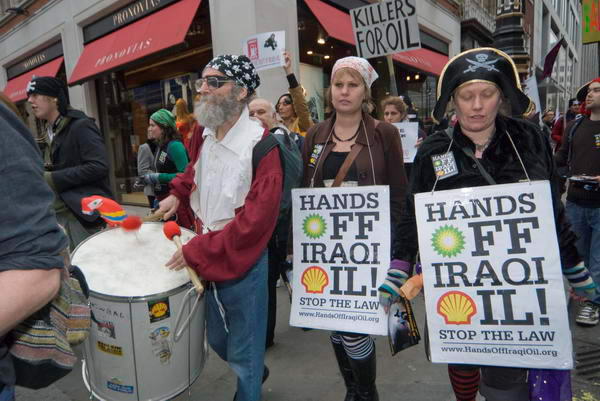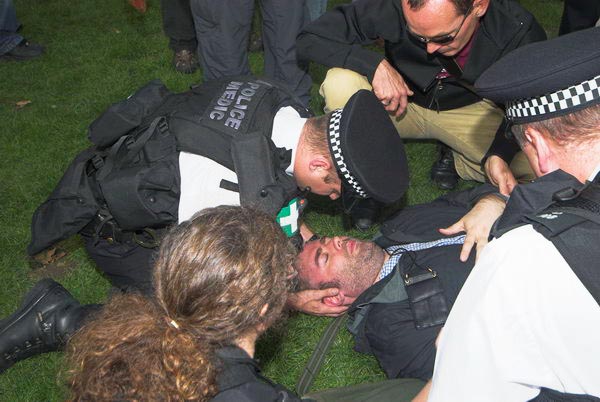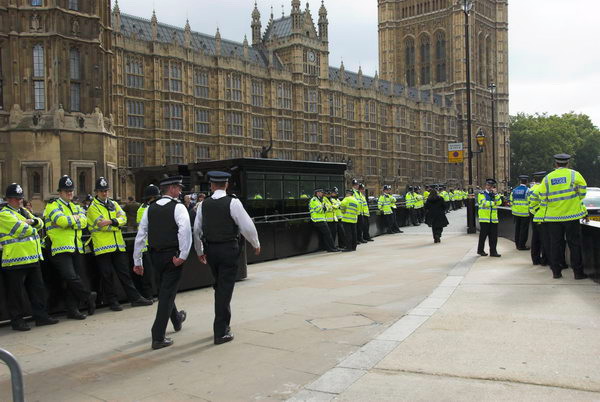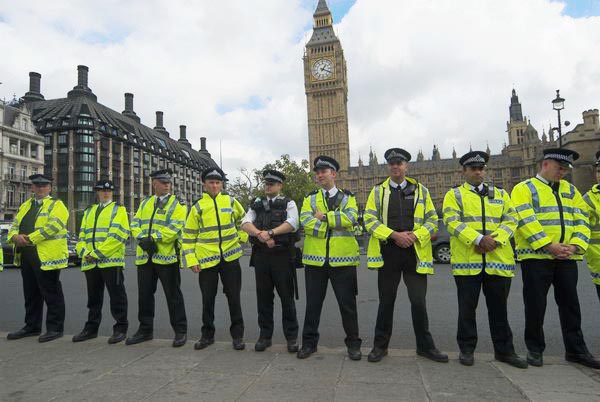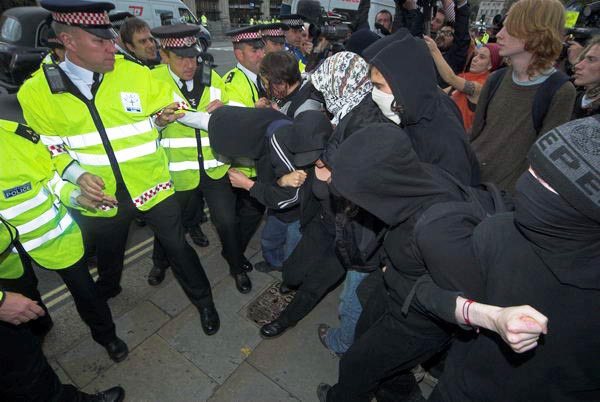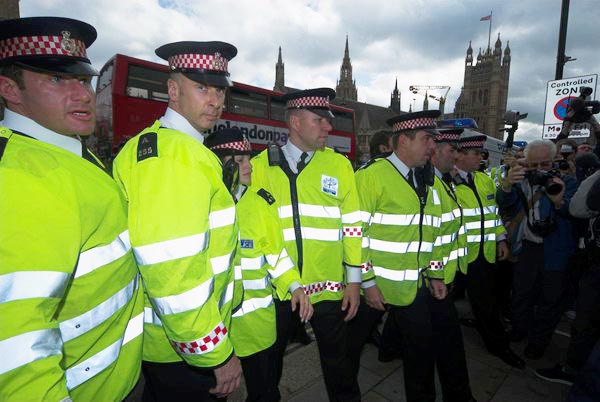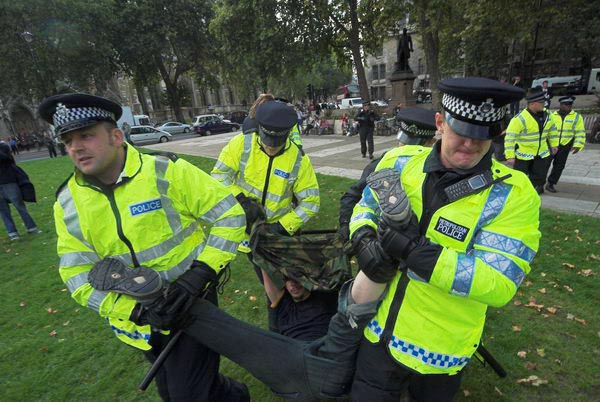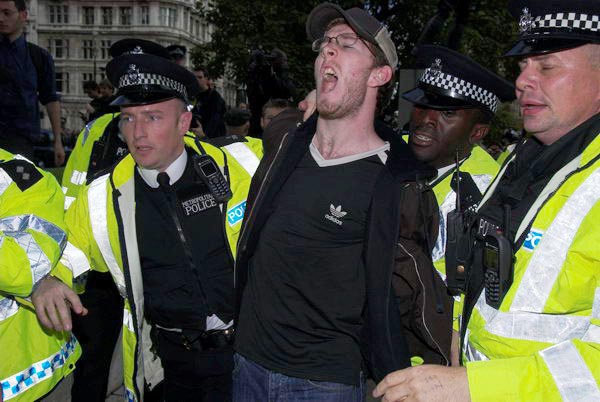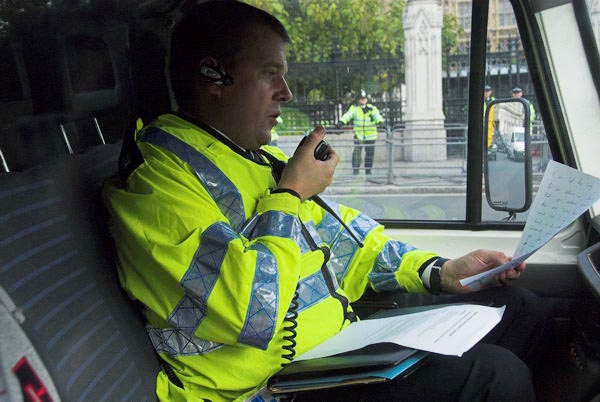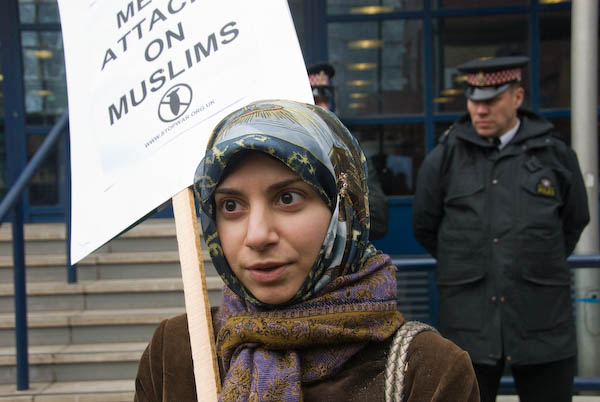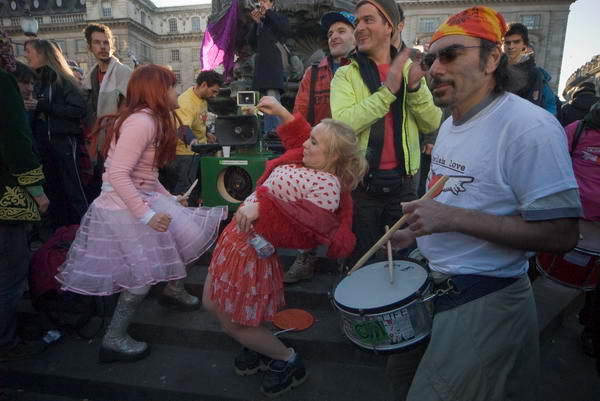I was too busy sorting through thousands (literally) of pictures for my talk next week to go up to Parliament Square yesterday morning to photograph the lobby and rally about a referendum over the updating of the European union, so I missed getting a picture of Plane Stupid activists who had climbed onto the roof of the Houses of Parliament and hung two large banners down the front of the building, one reading ‘BAA HQ‘ and the other ‘no third runway www.planestupid.com‘
It was a protest not just at the expansion of Heathrow, but also at the false nature of the consultation process, where large parts of the consultation document were written by BAA and the government has already decided (barring horrific accidents – such as almost happened recently on the approach over Hounslow when a plane lost power and had to glide in, only just making the airport) on not just a 3rd runway but also a 6th terminal.
Apparently as well as hanging the banners, protesters also made paper planes of the secret documents they had obtained showing government duplicity and fixing of the consultation process and flew them down into the MPs car park.
Photographically I don’t regret the missed opportunity, because I think it only too likely that any pictures I had taken of the event would have been at least as boring as those published in all the papers and Internet accounts I’ve seen. Perhaps one of the 3 men and 2 women who carried out the protest took a camera and made some better pictures?
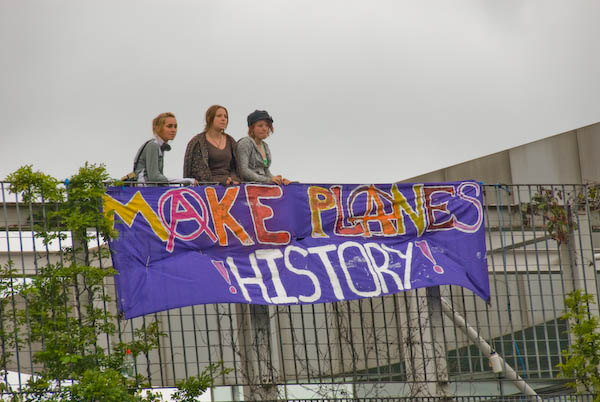
These are protesters on a rooftop at Heathrow in August, and marchers in London last December:
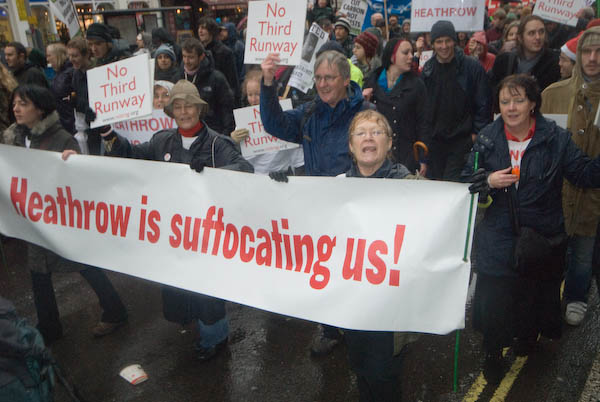
Of course the protest has been going on ever since the plans were first revealed to a stunned public, and I photographed the local protesters in Sipson and Harmondsworth in 2003.
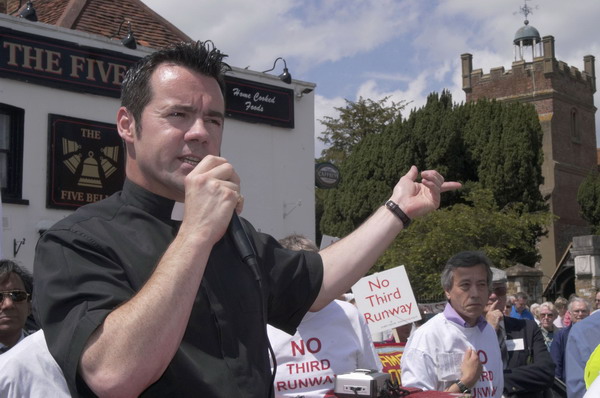
Of course Gordon Brown doesn’t like the demonstrators, deploring their actions, although in fact this and other similar protests have actually been very useful in pointing out gaps in security. Brown doesn’t like it because it reveals the facts about the skewed consultation process and the alliance between the promoters of unbridled airport expansion and the government (an alliance that started in the 1940s, when the public were first duped about the setting up of a civil airport at Heathrow.) He doesn’t like it because it highlights the absurdity of his claims to an environmental policy.
I grew up under the flight path in Hounslow, in my dreams able to reach up from my back garden and touch the planes as they roared over. I live a short bus ride from the airport (though my post code excludes me from the consultation over flight paths – all those planes that come over me must have lost their way!)
Heathrow was always in the wrong place. Continued expansion over the years has made its position more and more untenable. It makes no more sense than Croydon. We should have begun a new airport to replace it thirty or more years ago. There shouldn’t be any debate at all over its expansion, but simply about how fast it can be run down.
Peter Marshall





